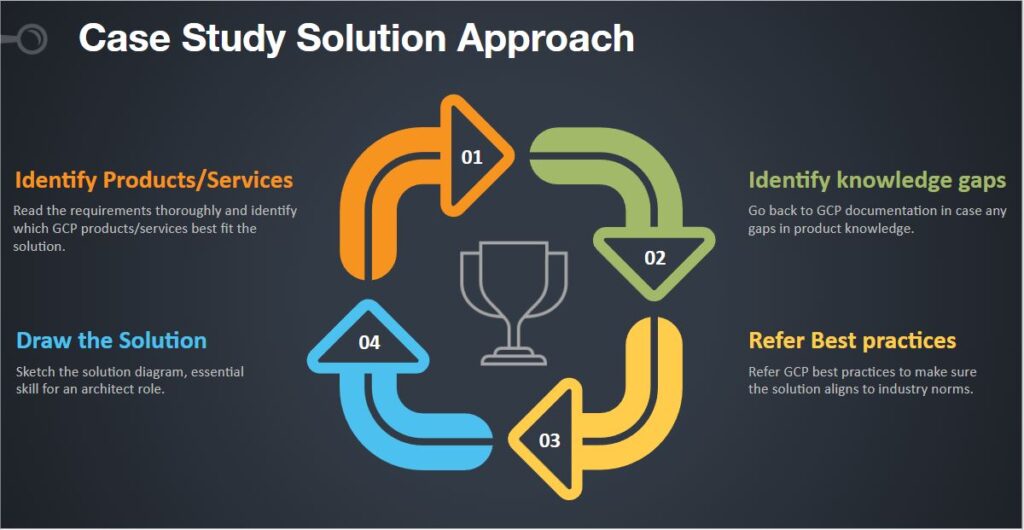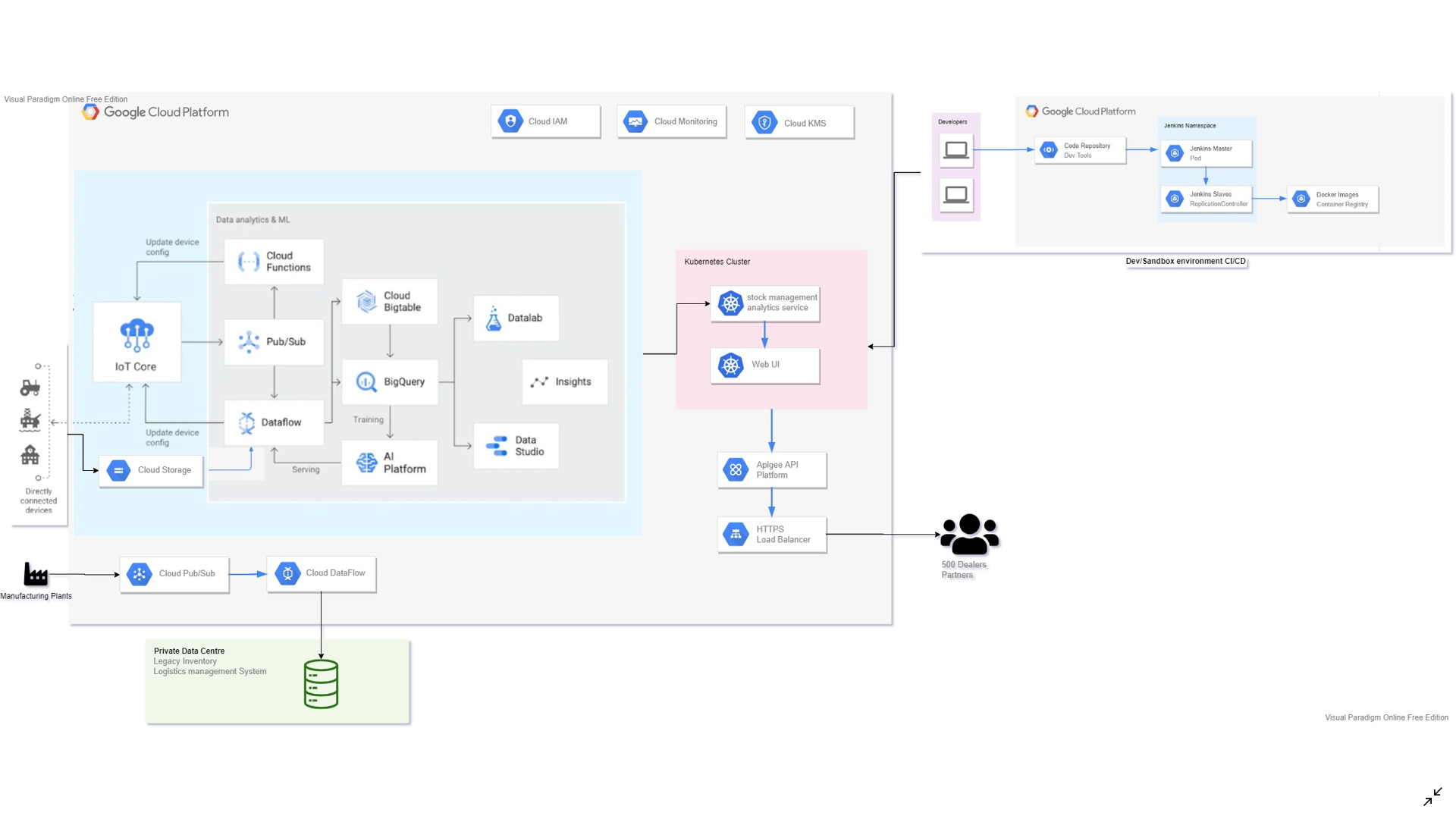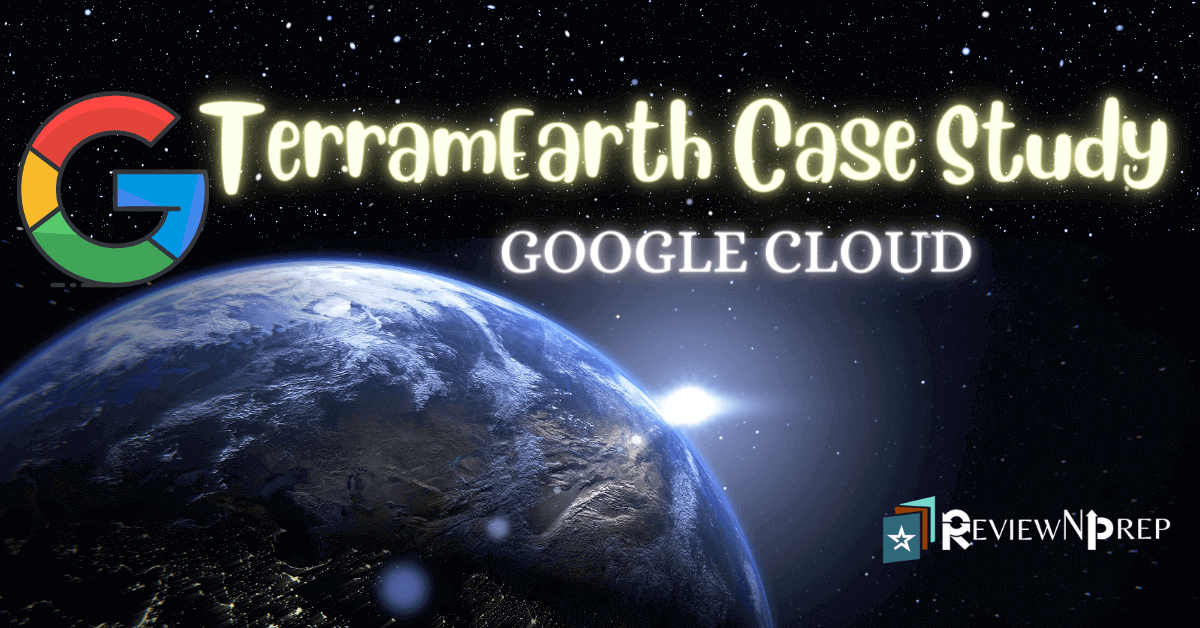|
|
What is a Case Study ?
In Google Cloud Architect certification examination, some of the questions may refer you to a GCP case study that presents a real-world like business solution concept with fictitious company names. I recommend that you work on these case study solutions as a part of your prior study plan and be ready with the solution answers. Below are the four case studies that may appear in the exam.
If you are planning to prepare for GCP Professional Cloud Architect exam, read my blog for tips, resources and more helpful information – Six steps to Google Professional Cloud Architect Certification
Blog
How many questions are expected in the actual exam ?
Out of total 50 exam questions, we may expect 10 questions based on any two out of above four case studies. Not to underestimate the importance, it is critical to prepare all scenarios during the course of study. We do not really get any time to read through the case study document during the actual exam, while the clock is ticking fast.
Checkout 200+ practice exam questions here – Google Professional Cloud Architect Certification – Practice Exam
When to start working on case study solutions ?
For any business use case solutioning, it is expected that you have basic understanding of the major Google Cloud Platform products and services. Hence the best time to start working on the case studies is after you have finished learning all the modules of GCP course study path.
The Approach
In this article, I propose an iterative approach to work on any industry use case solution. It has four major components as shown below.

Step 1: Identify GCP products & services
- Read the use case document carefully looking for any clues in each requirement.
- Identify what GCP product/services would best fit the solution.
- List down all the product/services on the solution paper as draft version.
Step 2: Identify knowledge gaps
- It may happen that you identify knowledge gaps with respect to few GCP product/service at this stage and it is absolutely fine.
- Go back to GCP documentation or video lessons to close those gaps.
Step 3: Refer Best Industry practices
- GCP has great quality documentation for industry best practices. Identify which practices can best fit your solution.
- Check if any special requirements on system performance or reliability design need any changes to draft version.
Step 4: Draw the solution
- It is essential for architect role to have skills of drawing architecture diagrams. The best way is to use easy paper and pen style at the beginning.
- Tools like draw.io or visual paradigm can be used later to sketch final version. GCP products & flow templates are also available within these tools. It helps to reduce time and effort required to sketch the solution diagrams.
Tips for the case study
- ‘Think through’ the solution yourself. Do not look at ready solutions on internet before your solution is completed.
- I recommend to re-iterate from step 1 to step 4 process at least 3 to 4 times, of course with sufficient time breaks in between. The solution evolves during each iteration and final version looks much better and presentable one.
- Discuss your solution among the co-learners in the group and get to know others’ perspective to see whether any enhancements are still required in the design.
With this approach, let’s take a look at the case study solution for TerramEarth
TerramEarth Company overview
TerramEarth manufactures heavy equipment for the mining and agricultural industries. They currently have over 500 dealers and service centers in 100 countries. Their mission is to build products that make their customers more productive.
Solution concept
There are 2 million TerramEarth vehicles in operation currently, and we see 20% yearly growth. Vehicles collect telemetry data from many sensors during operation. A small subset of critical data is transmitted from the vehicles in real time to facilitate fleet management. The rest of the sensor data is collected, compressed, and uploaded daily when the vehicles return to home base. Each vehicle usually generates 200 to 500 megabytes of data per day.
Products/services Identified:
- Cloud IoT Core is fully managed service for ingestion of telemetry data from sensors on the vehicles.
- Cloud Pub/Sub is used for streaming / real-time data ingestion.
- Cloud Storage for batch data processing from vehicles which upload data after returning to home base.
- Cloud BigTable is used for storing time series data from sensors.
Existing technical environment
TerramEarth’s vehicle data aggregation and analysis infrastructure resides in Google Cloud and serves clients from all around the world. A growing amount of sensor data is captured from their two main manufacturing plants and sent to private data centers that contain their legacy inventory and logistics management systems. The private data
centers have multiple network interconnects configured to Google Cloud.
The web frontend for dealers and customers is running in Google Cloud and allows access to stock management and analytics.
Products/services Identified:
- Cloud Dataflow is used for real-time and batch data aggregation pipelines.
- BigQuery is serverless data warehouse, enables scalable data analysis.
- HTTPS Global Load balancer for servicing global clients with improved service availability.
Business requirements
– Predict and detect vehicle malfunction and rapidly ship parts to dealerships for just-in time repair where possible.
– Decrease cloud operational costs and adapt to seasonality.
– Increase speed and reliability of development workflow.
– Allow remote developers to be productive without compromising code or data security.
– Create a flexible and scalable platform for developers to create custom API services for dealers and partners.
Products/services Identified:
- Machine Learning either with BigQueryML or AI platform is used for predictions of vehicle malfunction.
- CI/CD – Cloud Source Repositories, Cloud Build is used for DevOps automation which helps to increase speed of development workflow.
- Cloud IAM is used to provide remote developers access permissions to GCP project resources.
Technical requirements
– Create a new abstraction layer for HTTP API access to their legacy systems to enable a gradual move into the cloud without disrupting operations.
– Modernize all CI/CD pipelines to allow developers to deploy container-based workloads in highly scalable cloud environments.
– Allow developers to run experiments without compromising security and governance requirements
– Create a self-service portal for internal and partner developers to create new projects, request resources for data analytics jobs, and centrally manage access to the API endpoints.
– Use cloud-native solutions for keys and secrets management and optimize for identity based access.
– Improve and standardize tools necessary for application and network monitoring and troubleshooting.
Products/services Identified:
- Apigee Hybrid allows to host APIs in GCP and on-premises environments.
- Cloud Source Repository, Cloud Build, Container Registry for modernise CI/CD pipelines.
- Google Kubernetes Engine for distributed container based workload deployment and management.
- Sandbox environment is used by developers for experimentations with GCP products.
- Developer portal helps internal and partner developers to search and test TerramEarth’s APIs.
- Cloud KMS is used to create and manage cryptographic keys for access to applications and resources.
- Cloud Operations is suite of tools like Logging, Trace, Profiler, Monitoring, Debugger
Executive statement
Our competitive advantage has always been our focus on the customer, with our ability to provide excellent customer service and minimize vehicle downtimes. After moving multiple systems into Google Cloud, we are seeking new ways to provide best-in-class online fleet management services to our customers and improve operations of our dealerships. Our 5-year strategic plan is to create a partner ecosystem of new products by enabling access to our data, increasing autonomous operation capabilities of our vehicles, and creating a path to move the remaining legacy systems to the cloud.
Proposed Solution Diagram

Sample Case Questions
Below are some sample questions which can appear in the certification exam –
- Taking into consideration the business requirement, technical requirements and executive statement, what replacement would recommend for their data warehousing needs?
- How to deliver APIs that meet their business requirements?
- How to design the data ingestion layer for handling massive amount of data and also retrieving as quickly as possible?
- How should you minimize costs while analyzing raw telemetry data?
Hope you find this case study approach as useful support for examination preparation.
Written exclusively for ReviewNPrep.com – By Manoj P. (Connect with me on LinkedIn).

